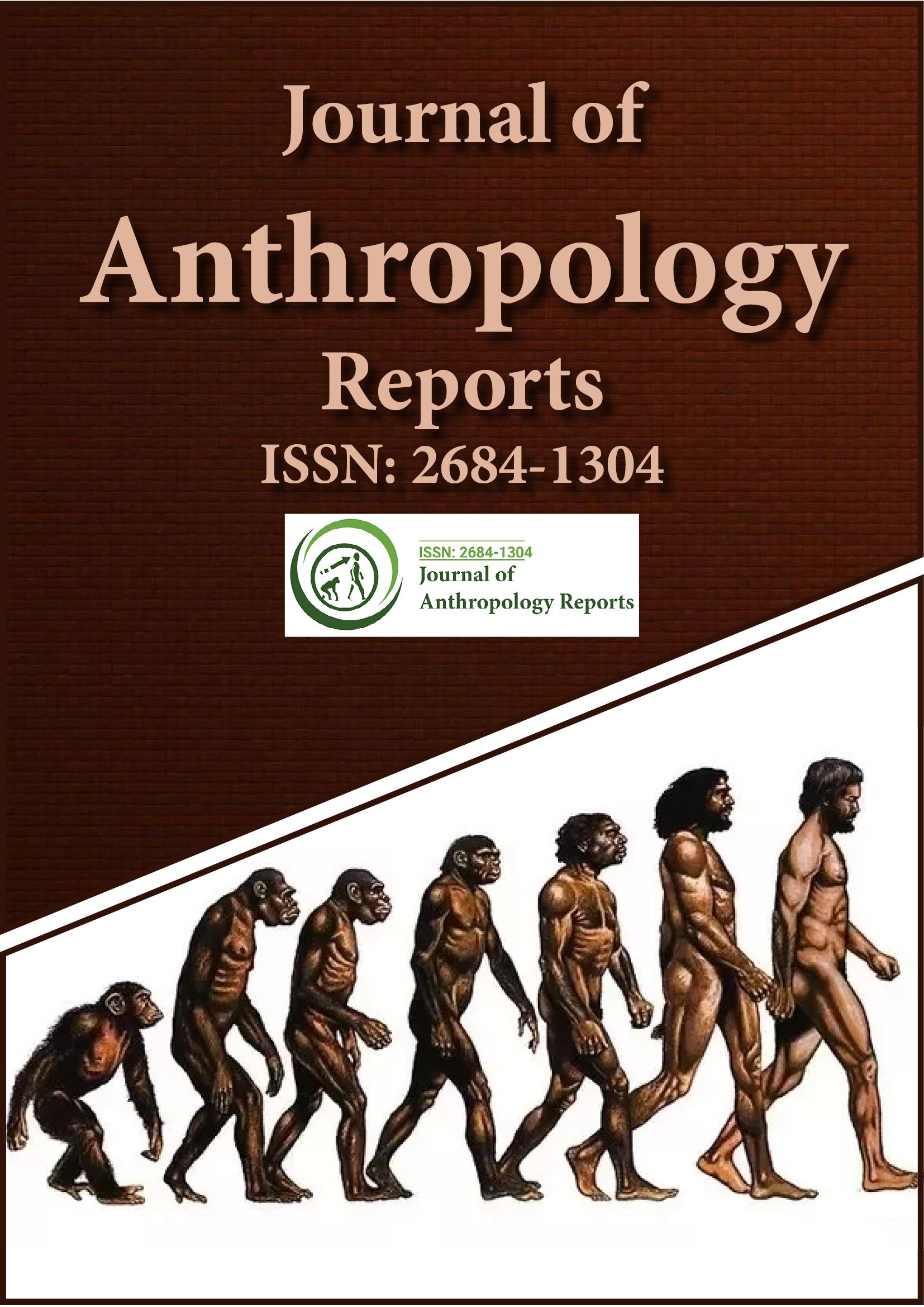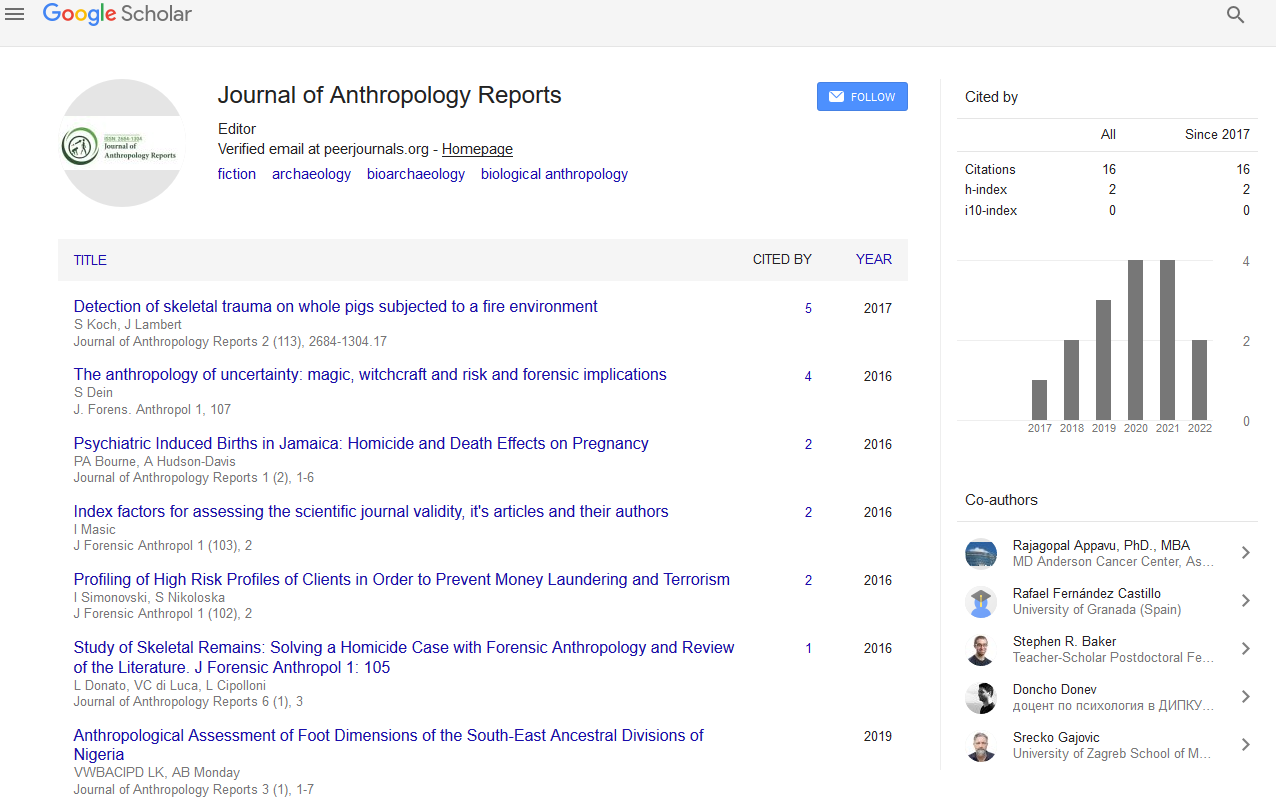Indexed In
- RefSeek
- Hamdard University
- EBSCO A-Z
Useful Links
Share This Page
Journal Flyer

Open Access Journals
- Agri and Aquaculture
- Biochemistry
- Bioinformatics & Systems Biology
- Business & Management
- Chemistry
- Clinical Sciences
- Engineering
- Food & Nutrition
- General Science
- Genetics & Molecular Biology
- Immunology & Microbiology
- Medical Sciences
- Neuroscience & Psychology
- Nursing & Health Care
- Pharmaceutical Sciences
Short Communication - (2024) Volume 7, Issue 1
Exploring the Human Science: An Multidisciplinary Insights
Zhang Liu*Received: 04-Mar-2024, Manuscript No. JFA-24-25357; Editor assigned: 06-Mar-2024, Pre QC No. JFA-24-25357 (PQ); Reviewed: 20-Mar-2024, QC No. JFA-24-25357 (QC); Revised: 27-Mar-2024, Manuscript No. JFA-24-25357 (R); Published: 03-Apr-2024, DOI: 10.35248/2684-1304.24.7.187
Introduction
This short communication meticulously navigates the intricate landscape of human behaviour, unravelling its multifaceted nature and offering illuminating insights. The exploration seamlessly blends traditional anthropological perspectives with contemporary observations, endeavouring to peel back the diverse layers that intricately compose the mosaic of human actions. Moreover, this short communication starts on a interesting exploration within the interdisciplinary area coined as "Human Science." This term encapsulates the balanced combination of anthropological insights with a spectrum of scientific disciplines. In the following adventure through anthropology, psychology, sociology, and biology, this article not only provide a broad view but also enriches the narrative with exclusive data and first-hand observations, establishing a nuanced and comprehensive overview of the ever-evolving landscape of human science.
About the Study
Human behaviour, a permanent enigma, has captivated anthropologists for generations. This short communication endeavours to navigate the intricate landscape of human behaviour, intertwining traditional anthropological approaches with contemporary observations to provide a holistic understanding. In the dynamic landscape of scientific inquiry, the term "Human Science" emerges as connecting various disciplines. This short communication aims to resolve the difficulties of Human Science, clarify on how anthropological perspectives intertwine with other scientific realms to provide a holistic understanding of human behaviour [1,2].
Cultural influences on behaviour: Delving into the impact of culture on human behaviour, we expose the delicate shades that shape actions, reactions, and societal norms. From rituals to social customs, cultural influences blend that dictates behavioural patterns [3].
Evolutionary roots of behaviour: Tracing the roots of human behaviour back to evolutionary dynamics, we explore how innate instincts and adaptive traits have sculpted our actions. Understanding the primal forces at play provides profound insights into contemporary behavioural patterns [4].
Technological transformations and behaviour: The advent of technology has introduced unprecedented shifts in human behaviour. Analysing the implications of digital interactions, social media, and virtual spaces, we scrutinize the evolving dynamics and their impact on interpersonal relationships [5].
Psychological perspectives on behaviour: Unpacking the complexities of the human mind, this section delves into psychological frameworks that influence behaviour. From cognitive processes to emotional intelligence, we explore the psychological underpinnings that steer human actions [6].
Anthropology as the foundation: Anthropology, with its focus on cultural, social, and biological aspects of humanity, serves as the fundamental of Human Science. By examining unique ethnographic data, this section showcases how anthropological insights contribute to the broader understanding of human societies and their intricate dynamics [7].
Interplay with psychology: The intersection of anthropology and psychology exposes profound insights into the human mind. Unique psychological data gathered through cross-cultural studies and behavioural experiments enrich our understanding of how cultural contexts influence cognitive processes and shape individual behaviours.
Sociological dimensions: Human science extends its reach into sociology, exploring the structural foundations of societies. Through the analysis of social structures and organizational patterns, this section integrates unique sociological data to illustrate how human behaviour is shaped by societal norms, institutions, and collective identities.
Biological perspectives: The biological aspect of human science investigates the physiological underpinnings of human behaviour. Drawing on biological data, including genetic studies and evolutionary analyses, this section emphasizes the intricate relationship between our biological makeup and cultural practices, offering a nuanced view of human adaptability [8].
Cross-disciplinary synergies: The synergy among anthropology, psychology, sociology, and biology forms the crux of Human Science. By synthesizing unique data from each discipline, this section illustrates how a collaborative approach enhances our ability to comprehend the complexity of human existence, transcending disciplinary boundaries [9,10].
Conclusion
This short communication provides a complicated view into the area of human behaviour, acknowledging the diverse influences that intricately shape our actions. Through the interlocking of time-honoured anthropological traditions with contemporary perspectives, we aspire to ignite ongoing discussions and foster deeper explorations in this absorbing field. As we draw the cover on this discourse, it is crucial to underscore the truly interdisciplinary essence of human science. By seamlessly incorporating distinctive data and profound insights gleaned from anthropology, psychology, sociology, and biology, we achieve a comprehensive and interconnected comprehension of human behaviour. This exploration not only serves as a clear call for further collaborative endeavours but also as an inspiration for continued research, opening new frontiers in the interdisciplinary blend of human science.
References
- Hong JC, Hwang MY, Szeto E, Tsai CR, Kuo YC, Hsu WC. Internet cognitive failure relevant to self-efficacy, learning interest, and satisfaction with social media learning. Comput Human Behav. 2016; 55:214-222.
- Jia J, Li D, Li X, Zhou Y, Wang Y, Sun W. Psychological security and deviant peer affiliation as mediators between teacher-student relationship and adolescent Internet addiction. Comput Human Behav. 2017; 73:345-352.
- Cutumisu M, Schwartz DL. The impact of critical feedback choice on students' revision, performance, learning, and memory. Comput Human Behav. 2018; 78:351-367.
- Hawlitschek A, Joeckel S. Increasing the effectiveness of digital educational games: The effects of a learning instruction on students' learning, motivation and cognitive load. Comput Human Behav. 2017; 72:79-86.
- Shackel B. Usability-context, framework, definition, design and evaluation Interact. Comput. 2009; 21(5-6):339-346.
- Erkens G, Jaspers J, Prangsma M, Kanselaar G. Coordination processes in computer supported collaborative writing. Comput Human Behav. 2005; 21(3):463-486.
- Li D, Han B. Behavioural effect on pedestrian evacuation simulation using cellular automata. Saf Sci. 2015; 80:41-55.
- Pauls J. The movement of people in buildings and design solutions for means of egress. Fire Technol. 1984; 20(1):27-47.
- Xinjian L, Qinyi T. The themes and objects of American educational anthropology and its enlightenment for Chinese educational anthropology studies: Based on the analysis of anthropology and education quarterly. Procedia Soc Behav Sci. 2012;46:3706-3711.
- Hoye LF. Linguistic anthropology and pragmatics. J Pragmat. 2006;38(6):944-967.
Citation: Liu Z (2024) Exploring the Human Science: An Multidisciplinary Insights. J Anthropol Rep. 7:187.
Copyright: © 2024 Liu Z. This is an open-access article distributed under the terms of the Creative Commons Attribution License, which permits unrestricted use, distribution, and reproduction in any medium, provided the original author and source are credited.

